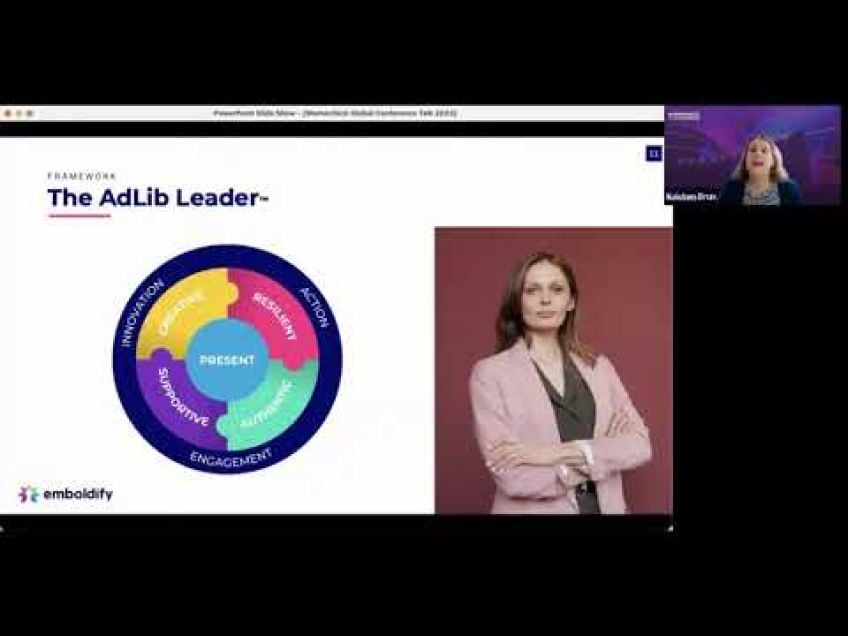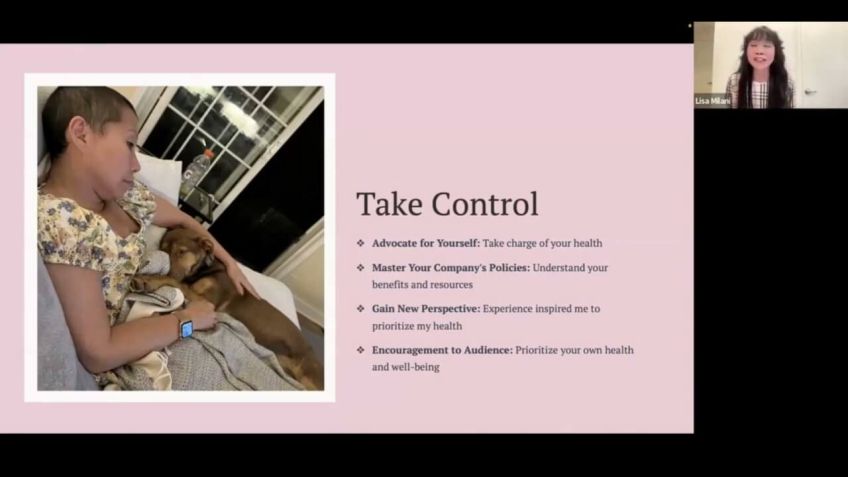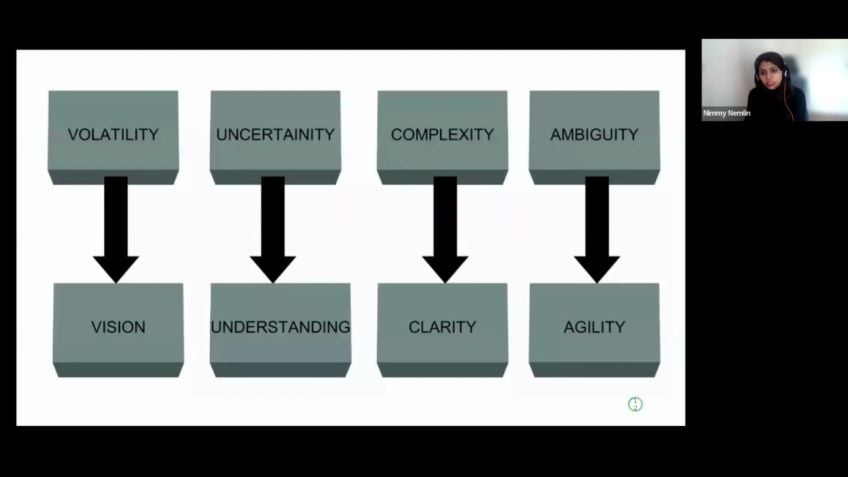The Fourth R: Resilience
An Insight into the Power of Resilience
It's a pleasure to welcome you to this enlightening discourse on resilience. My name is Lii Thomas, a technical manager at Vorm Reply, a digital transformation firm based in Kansas City, US. I am currently serving the team remotely from Kochi, South India.
Understanding Resilience
Today's discussion revolves around the concept of resilience. To set the stage, let's dive into an intriguing story from the 15th century. A Japanese Shogun owned a priceless teapot, which, unfortunately, broke. Despite having it repaired in China, the result was heartbreakingly disappointing. A local craftsman, understanding the Shogun's dissatisfaction, dismantled the pieces and mended them using golden paint. This creative act, far from just repairing a teapot, birthed the famous art form we now know as Kins Sui.
Resilience, in essence, is like this art form, a transformation that involves embracing our experiences and scars and becoming a new version of ourselves after a crisis.
Resilience is so much more than simply bouncing back, especially in situations where true recovery is impossible, such as the loss of a loved one or chronic illness. In such scenarios, resilience encompasses the idea of adapting and embracing a new normal.
Navigating through Resilience
- Accepting Vulnerability: Even our favorite superheroes have weaknesses. However, their power doesn't lie in being invulnerable, but in their ability to navigate their vulnerabilities. Acceptance of one's vulnerability is the first principle of developing resilience.
- Seeking Support: While resilience does involve inner strength, it also requires one to seek help and build a supportive network around themselves. The strength of character and the ability to ask for help when necessary are crucial aspects of resilience.
Traits of Resilience
Understanding resilience can be simplified by understanding three core traits that resilient individuals tend to possess:
- Facing Reality: Acceptance of reality and being prepared for potential crises are significant elements of resilience, along with the willingness to learn and adapt.
- Searching for Meaning: Finding a purpose in adversity and attributing meaning to one's suffering aids the development of resilience. It provides a coping strategy and a unique perspective on hardships.
- Improvising: While preparation and finding meaning are essential, the ability to improvise in situations when plans fail plays a vital role in surviving and thriving through adversity. Resilience is about flexing our adaptability muscles and navigating through unprecedented situations with resourcefulness and innovation.
The Importance of Resilience
Resilience is essential in all aspects of life, whether in a boardroom discussion, a clinical setting, or navigating personal challenges. It's not about bouncing back to normalcy but rather navigating forward into uncharted territories. It involves embracing the fact that vulnerability and resilience can coexist, that seeking community support is part of being strong, and that resilience can be developed with practice.
Resilience in Practice: Restaurant of Mistaken Orders
Japan's "Restaurant of Mistaken Orders" is a unique example of resilience in practice. What sets this chain apart is that all their servers are living with dementia. Patrons oftentimes receive meals they didn't order, but they come with an open mind and heart, ensuring a unique and immersive experience borne out of understanding and resilience.
No matter where in the world you are, remember that resilience is navigating life's twists and turns, making the most out of unexpected situations, and coming out stronger and wiser on the other side.
If you have any queries, feel free to reach out to me on LinkedIn or Twitter. Stay resilient, stay strong, and most importantly, stay safe.
Video Transcription
Hello, friends and welcome to the session on the fourth hour of resilience. Um My name is Lii Thomas. I'm a technical manager with uh Vorm Reply, we're a digital transformation firm based out of uh Kansas city in the US.And I work for their uh India office uh from South India, from Kochi. So that's where you can find me on social media. So here's the agenda for the day. We will be covering what, how and the why of uh resilience. So let's get started short story before we start way back in the 15th century. There used to be uh a Japanese uh military dictator shogun as they call it, he owned a beautiful teapot and one day it happened to break, he sent it all the way to China to get it repaired. I mean, think about it how dear he must, it must have been to him that it he got a ship right across the shores. It came back to him all fixed, all cemented, but he was heartbroken. The T ball was nothing compared to what it was earlier. It was a poor shadow of its original image and the shogun was terribly disappointed. The local craftsman who understood this, volunteered to take a stab at it, they pull the pieces apart and they used a golden lacer of paint to put it back together.
Not only was the shogun impressed by this, but it also gave rise to a new form of art called Kins Sui, which is renowned worldwide today. This is so metaphorically related to the topic that we're discussing today, which is resilience, Resilience in so many ways is not about putting your pieces together, building back to the pieces and trying to cover or hide your existing experiences more. So it's about transformation to a new being, allowing those experiences to be a part of yourself so that you are transformed to a new being. We come back to that thought. But let's ask ourselves, what exactly is resilience? Ask any random kid on the block, even a school going kid and they tell you resilience is some form of bouncing back. Yes, but sometimes bouncing back may just not be possible. Think about a person who's lost a loved one, the death of a loved one, a disability, chronic illness. Um in these cases, sometimes bouncing back to an existing state of being may just not be possible and even trying to do that may leave you dejected instead, why not think about it bouncing forward into a new normal historically, resist resilience has always been discussed in terms of disaster management and we've got beautiful stories from there as well.
When the government of Honduras planned to create a bridge over the Choluteca river. They collaborated with some of the best mines in the world with the Japanese engineers and they built a bridge soon after the bridge was built, hurricane Mitch plagued Honduras and it led to mass devastation.
It left the bridge untouched. But there was a small problem as you can see from the image, the river that was flowing initially under the bridge chose to turn its course because of the hurricane and nature has got its own ways. It's very difficult for us to understand. We know that by our pandemic experiences ourselves, she throws curveballs at us and we would absolutely be duck. The river chose to change its course. And the bridge just stood there like a bridge to nowhere if we have to compare ourselves to solo Teca bridge and we're thinking of bouncing back into a normal that does not exist anymore. We could probably be in for some surprises. Instead, what we might think of is moving into a new normal. So not just being built to last but also being built to adapt. So how exactly can we be resilient? You do a quick, quick Google search and you find hundreds of tips and techniques from people on how to be resilient. People also might think that this is some skill or trait or talent that's just part for some blessed people. But resilience is not just for Maya Angelo, for Malala Yusuf Azzi. It's something that you and I can develop. It's a muscle that we develop by constant exercise and I would boil it down to two basic fundamental principles.
One, accepting your vulnerability, think about your favorite superhero and think about what makes him or her the superhero that they are. Do they have any weaknesses of loss? I bet every single one of them has either an anxiety disorder or a depression or a dark past, maybe even kryptonite. But what makes them a superhero is not that they are not invulnerable. It's that they found their way to work around it and that's how they save the planet. Resilience can also be misunderstood as just this whole lot of inner strength. Of course, it is, but a great trait of inner strength is being able to reach out for help seeking support. You need to have a strong support system. And having that goes hand in hand with being strong yourself, seeking support is one of the fundamental principles of becoming or working towards resilience. Such a classic example of resilience in the form of a country that's exemplified. This Japan has been plagued by natural disaster over all these decades, like tornadoes, earthquakes, tsunamis, volcanic eruptions, what not, if not just survived but emerged victorious, stronger than they've ever been before. Most of us might remember Hiroshima for the twin bombings of the city. Seldom few.
Remember it that just 20 years within 20 years of that bombing, Tokyo posted its first National Olympic Games. And the man you see in the sports illustrated magazine cover there is a Japanese athlete who's yielding the Olympic flames into the opening stadium and the opening ceremony.
He Yoshino Saka was born on August 6th, 1945. The very day his hometown Hiroshima was bombed. Such a symbolic and meaningful representation of what a culture would do for resilience. And resilience again is not park for just special occasions. As these, it's a way of life for some people. We might forget Japan's heartbreaking loss to Belgium in the last World Cup. But many of us may remember the headlines when Japanese Spectators stayed back despite their devastating loss, despite their heartbreaking loss to clean up the stadiums and to take care of each other. These characteristics of resilience are not again part for one country or one community of people.
How we develop resistance, resilience can be boiled down to three characteristics of resilience. One, a staunch acceptance of reality. Two, a deep belief that life is meaningful and most of all an ability to improvise the first two together can allow you to bounce back, but only the last along with the first two will make you truly resilient. Let's see how first up facing down reality, they say don't waste a good crisis, but sometimes a crisis is just too late to start the learning. Morgan Stanley was the biggest tenant to have occupied the World Trade Centers. When the September 11 attacks happened of the 2700 plus employees that they employed only seven they lost on that fateful day. This was no luck and no accident. Years of preparedness and good leadership skills that allowed them to accept their vulnerabilities. Having stationed their offices in a strategic position at the World Trade Center, they knew they were vulnerable to attacks of these sort. They practiced their mock rules with due diligence. How many of us love mock rules and how many of us pay attention to that? So preparedness and contingency measures and facing reality. Step one to Search for meaning. One of my favorite all time books is Victor Frankl's Man. Search for meaning. He's not just a holocaust victim.
He's a survivor and Frankl's theories have been used consistently over the years even by business consulting firms to how to develop resilience, uh research and strategies. One of the things that he has observed, not just in himself but other people who have survived the holocaust is this the ability to accept adversity is a huge coping strategy, no doubt. But when you embrace adversity, Victor Frankl speaks on behalf of so many victims who have made it past that mode into survival mode. When you attach A Y to your sufferings, when you attach A Y to the, how it makes it a lot easier, but most of all, and above all improvisation skills when contingency plans and preparedness just fails you. The Apollo 13 teams oxygen tanks exploded 200,000 miles away from the surface of the earth while they were making their way back, they used all their years of expertise and experience to use just stuff they could get their hands on duct tape, plastic bags and cardboard to come out with the novell apparatus enough to give them the time and the space to breathe till they reach back to the surface of the earth.
What could have been deemed a huge mission failure was one of the biggest learnings in the history of NASA. Sometimes we need to have your ingenuity put into place an improvisation, adaptability to get you past that sense of resilience. Resilience matters today and always in the boardroom in the cancer room in the track, both for school kids, college kids professionals, personal lives, always let's bust submits here. Resilience is not just about bouncing back. It's not just about getting up, it's about moving forward, navigating into a new world, perhaps unpredictable world as well. But resilience is not just an innate cap capability. It is a skill that you and I can learn that we can develop. It's a mindset and the mindset is not one of vulnerability. It is not, it is not one of invulnerability. It can be one that you can be totally resilient and you can be totally vulnerable as well. Resilience is not just all about inner strength, tap into your community and seek their support. Let's come full circle to Kintsugi. Kintsugi was not a story of just the 15th century. It is a story that is perfectly applicable in today's world as well. Today in Japan, there is a chain of restaurants which started under the name restaurant of mistaken orders. What is unique about this restaurant is that every single waiter, every single server in that restaurant is someone who is living a life of dementia.
It's interesting if you go into that restaurant and make an order, perhaps your order could be mistaken, you might get something that you did not order for. But that's what everyone who goes into this order is expect into this restaurant is expecting something that will taste good.
Someone who is open and who's understanding enough of these. Let's try to be resilient. Let's try also to be understanding of people who's living that life and depending on where in the world you are seeing this show today. I hope when life throws lemons at you, feel free to make lemonade or marmalade or pickle them up. Let's make the best of the crisis. Thank you for listening and I appreciate your attention and your patience. I'm happy to take questions. If any feel free to connect with me on linkedin Twitter or social media. Thank you. Ah I see a question from Simon. The reason it is called 1/4 R is because typically we learn three Rs at school, reading, writing arithmetic. My son says different arts uh depending on the generation that you come from. It's um reusability, recycling, um etcetera. So I call it the fourth uh resilience something I think we should have learned or picked up at school. Probably a formal education should have had it inculcated into our curriculum. But nevertheless, uh better late than never. No problem. Any more questions? Cool. Thank you so much people for joining and I'm happy to stay connected. Thank you and enjoy the rest of your conference.
Take care and stay safe.





